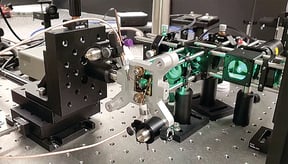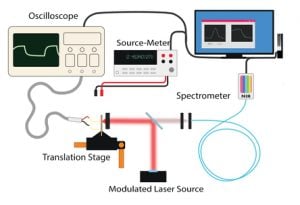 New technology for solar cells, based on materials such as organic polymers and quantum dots, offers several advantages over traditional silicon cells. These technologies are low cost, lightweight, and partially transparent for installation on new surfaces such as windows, but they currently cannot be scaled for large power production due to the many defects that are introduced during the manufacturing process.
New technology for solar cells, based on materials such as organic polymers and quantum dots, offers several advantages over traditional silicon cells. These technologies are low cost, lightweight, and partially transparent for installation on new surfaces such as windows, but they currently cannot be scaled for large power production due to the many defects that are introduced during the manufacturing process.
Susanna Thon, an assistant professor in the Department of Electrical and Computer Engineering, invented a new measurement tool to address this problem. The tool, Multi-Modal Spatial Spectroscopy, can simultaneously produce spatial maps of all of the relevant parameters for solar cell performance. Thon’s lab used this tool to find and classify defects in solar cells, allowing researchers to target and eventually fix specific types of defects.
 The researchers also demonstrated how artificial intelligence methods could someday be used to automate this process, paving the way for defect-free solar cells.
The researchers also demonstrated how artificial intelligence methods could someday be used to automate this process, paving the way for defect-free solar cells.




